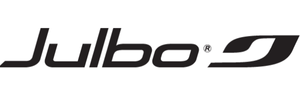
WHAT ARE PHOTOCHROMIC LENSES?
Photochromic lenses adjust to changing light conditions by getting lighter or darker depending on the amount of UV light present. The more UV light, the darker the lens becomes.
Did you know? Julbo's REACTIV Photochromic lenses have the fastest transition time on the market? It takes about 20 seconds for the lens to adjust to its optimized Visible Light Transmission (VLT) level.
TRADITIONAL GOGGLES WITH REPLACEMENT LENSES
Standard snow goggle option that typically comes with one dark lens (Category 3) and one lighter lens, which can either be clear or Category 1.
With so much technology available for one lens it begs the question: Is TWO always better than ONE? ... well usually yes, but when it comes to snow goggle lenses, that may not always be the case. Here's 7 reasons why Julbo REACTIV Photochromic lenses are better than Traditional Two-lens goggles.
1. VERSATILITY FROM A WIDER VLT RANGE
Visible Light Transmission (VLT) refers to how much light filters through a lens. VLT is based on a scale of 0-4, where the higher the category number the less light is allowed to pass through. With a standard lens, you are stuck with the VLT range for that particular lens, which is fine if the weather never changes.
With REACTIV photochromic lenses, you have a wider VLT range providing greater versatility. Whether the clouds come out or it remains bluebird all day, REACTIV photochromic lens saves you the headache of trying to be a weatherman and guarantees you have the right lens no matter the weather.
2. EASE OF USE
With photochromic lenses, there is no need to change lenses when light conditions change. Since there is only one lens, you don't have to carry around an extra lens. No more inconvenient trips to the car, lodge, or awkwardly carrying an extra lens in your jacket pocket.
3. NO COLD FINGERS
We've all been there. You're on the chairlift and you realized you picked the wrong lens. The clouds have rolled in and now you are skiing to the car with your goggles on top of your helmet. Now for the fun part, you have to try to pry the lenses off with frozen fingers. Woof! With REACTIV lenses you never have to change lenses, sacrifice fingernails, and miss out on untouched powder laps.

4. NO LOSING EXTRA LENSES
By only having one lens, you also eliminate the risk of losing the second lens, so you can always be prepared for light and dark conditions.
5. SAFETY
By having clear visibility in all weather conditions, you will be able to see and avoid dangerous terrain making it a safer option than standard Goggles.
6. EYE PROTECTION
By having the right lens shade, you protect your eyes from overexposure to sunlight. All Julbo lenses block 100% of UV A, B, and C.
7. VALUE
Compared to traditional snow goggle lenses, REACTIV photochromic lenses provide more value by being versatile in a variety of conditions, requiring no maintenance, and by providing safer and clear visibility. All Julbo's REACTIV photochromic lenses are backed by a LIFETIME WARRANTY.




